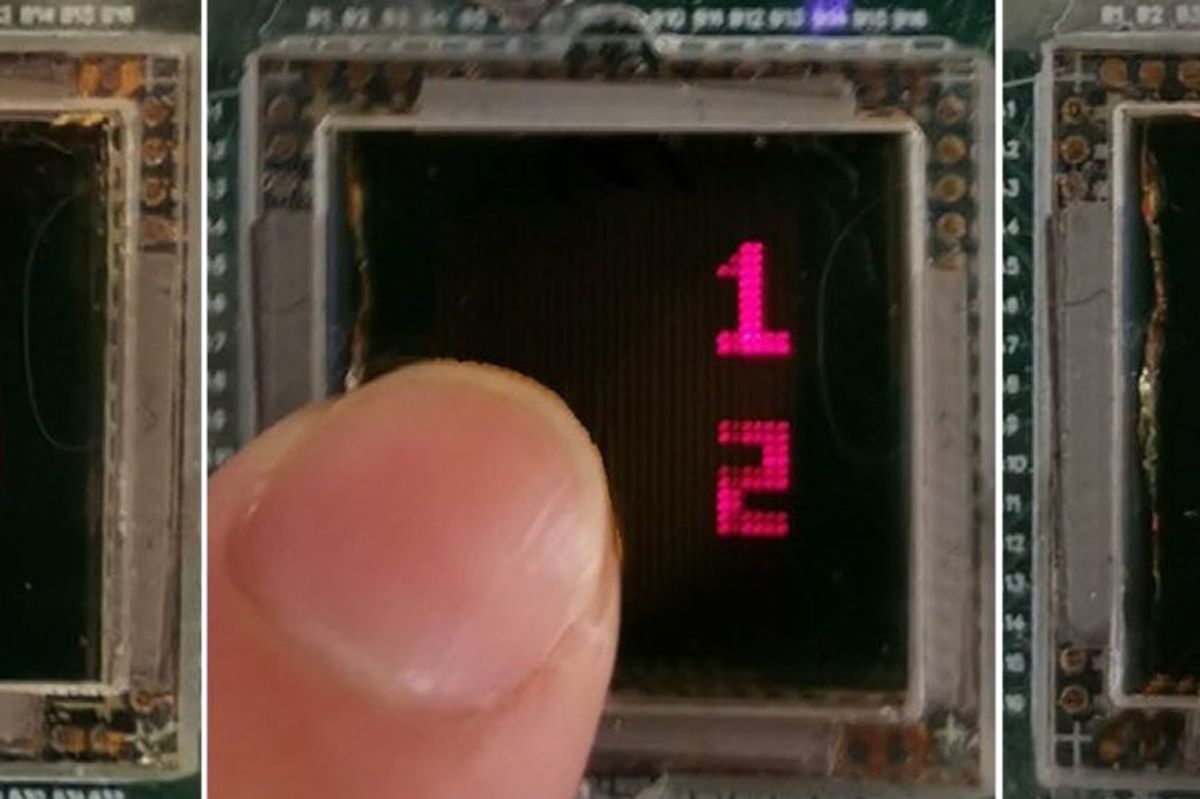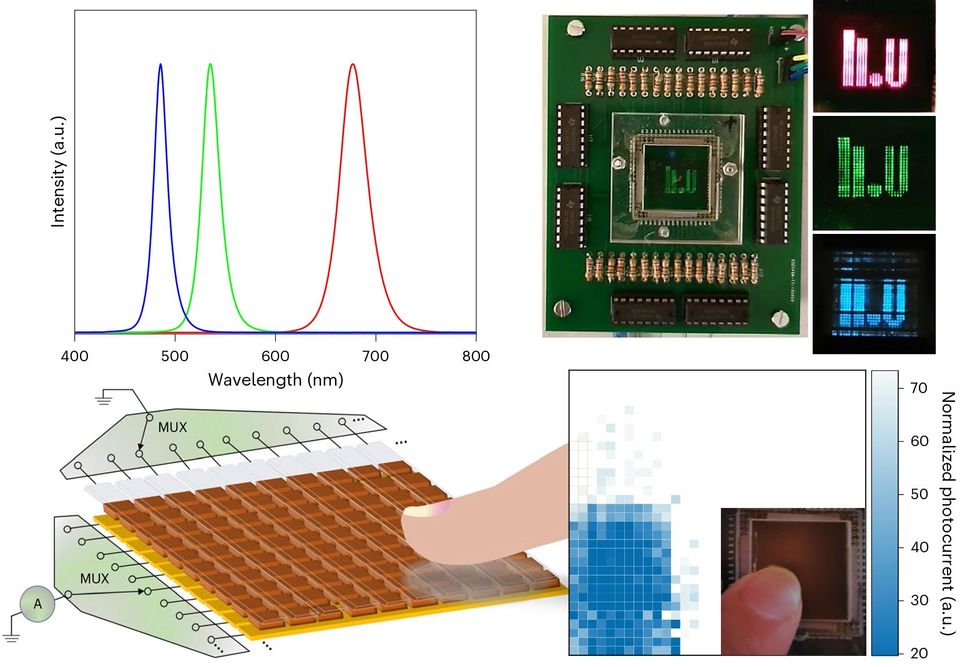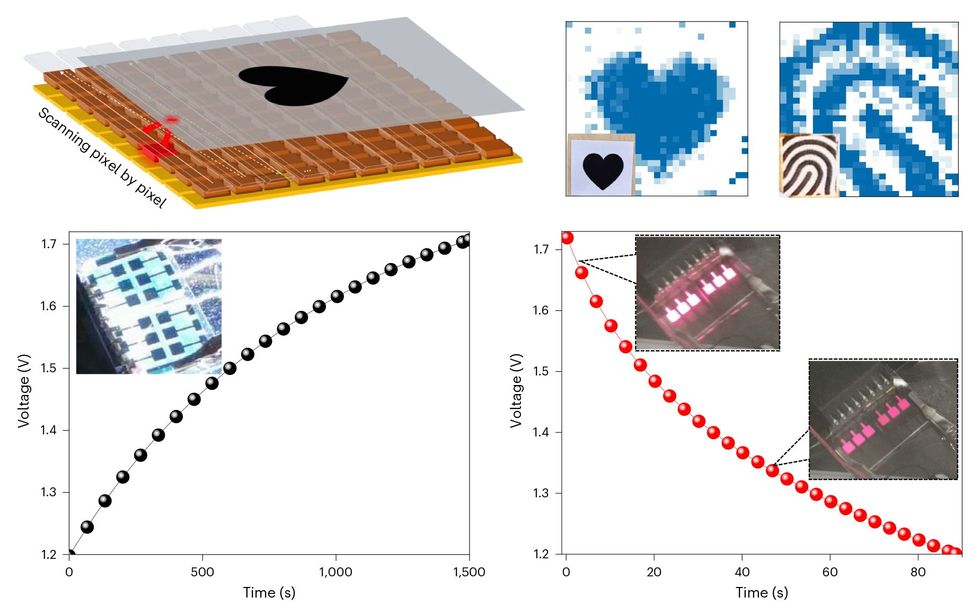
Modern smartphone touchscreens offer edge-to-edge glass and use advanced bonding that makes the screen nearly flush with the surface of the phone. Beneath it, however, there’s still layer upon layer of glass, polarizes, color filters, capacitive touch sensors, and more. That’s an obstacle for smartphone makers looking to integrate sensors or create flexible displays.
However, new research highlights another option: photo-sensitive pixels. They can do far more than detect touch. They can image objects placed on a display, detect fingerprints, and even charge a device.
“We know that LG Display, and other display companies, are interested in how to integrate the function of a touchscreen, or imaging,” said Chunxiong Bao, a co-author on the new research and professor at Nanjing University’s School of Physics. “They have tried materials like OLED and QD-LED, but the photoresponsivity is not so good. For our perovskite LED, it’s good.”
It’s also a fingerprint reader, health sensor, and light meter
Perovskites are a class of materials that form a crystal structure like that of the eponymous perovskite—a calcium titanium oxide mineral discovered in the Ural Mountains of Russia in 1839. Perovskites, the class of materials, became popular in photovoltaics as researchers discovered they can be used for efficient solar cells and brighter, better quantum dots.
Bao and his co-authors, in this case, wanted their perovskite device to both create and react to light. The Pervoskite-LED (PeLED) material they developed can display an image at a high brightness: the team demonstrated red, green, and blue PeLEDs with a reported brightness up to 4,700 candelas per square meter (most smartphone displays have a peak brightness in the hundreds). But PeLEDs also efficiently detect light, a trait the researchers used to create a touchscreen.
“If you want [a material] to have a good photo response, you need to generate [electron] carriers in these materials,” said Bao. “In perovskite, this is easy.” It’s the carrier transport layer that allows the movement of electrons, which in turn makes it possible to detect touch input. And because PeLEDs are photosensitive, they can both detect and image the objects that touch the display.

A newly developed perovskite LED (PeLED) display can image objects that touch it, making it useful as—among a range of tasks—an imager, fingerprint sensor, and light sensor.Nature
The result is a display that bundles multiple sensor functions. It can image small, high-contrast objects placed on the display, which in turn should make it a viable fingerprint reader (the prototype display was too small to read a real fingerprint, however, so the researchers tested it with a small image of a fingerprint). The display’s photosensitivity can also be used as a light sensor, to transfer data, or function as a PPG sensor to provide user health data.
These capabilities could help smartphones integrate features which currently require separate, individual sensors into the display. Such device integration would then in turn reduce the complexity and thickness of the device. And while the prototype display the team developed wasn’t flexible, Bao says the technology could prove adaptable to flexible displays, such as those found in folding or rollable phones.
It’s a solar charger, too
PeLED’s photosensitivity holds surprising potential to replace many smartphone sensors, and it has one more trick up its sleeve. The display doubles as a solar charger.
This is, in some sense, unsurprising. As mentioned earlier, perovskites hold promise for improving the efficiency of future solar cells. But this is the first demonstration of a functional perovskite display that can generate a charge.
“It’s a fundamental concept that good solar cells should be good LEDs, people know this well,” said Artem Bakulin, a reader in physical chemistry at Imperial College London, who is unaffiliated with the current research. “But to be brave enough to actually pair solar cells and LEDs, because of some engineering challenges, it would be difficult. […] In this paper, they try to solve the problems and combine the two fields together.”

The new PeLED display can charge a capacitor from 1.2 to 1.7 volts in roughly 25 minutes.Nature
The researchers proved this capability by using the prototype display to charge a supercapacitor that could then be used to power the display. Interestingly, the display’s power conversion efficiency was over twice as high when exposed to indoor white LED lighting than when exposed to simulated sunlight, which could be beneficial for consumer devices that spend most of their time indoors.
The researchers noted that their display technology is a proof of concept and requires more work to scale to a size useful for consumer electronics. Longevity is also an issue, as current perovskite materials degrade quickly: the paper reports an “operational lifetime” of just 18.5 hours.
“The material is easy to make, but it’s also easy to degrade,” said Bao. “Many researchers are trying to improve the device lifetime. Our device is not stable, but some groups report perovskites with a much longer lifetime.” A group of researchers at Princeton University have produced perovskite semiconductors with a 30-year lifetime, offering a path towards solving the longevity problem.
The PeLED researchers described their device in a paper published last week in Nature Electronics.
Source: IEEE Spectrum Computing
